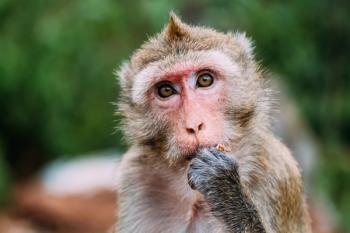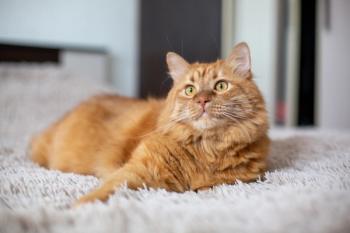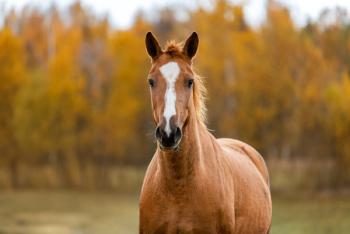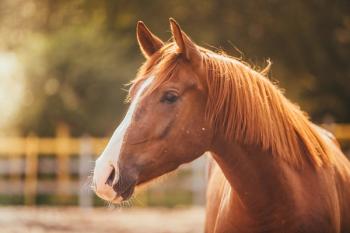
Missouri veterinary team tackles the case of the foal with no mother
Reproduction expert uses hormones and technique to convince retired mare to act as mother to foal rejected by biological dam.
Ren, now a healthy 1-year-old gambolling at Stonebridge Farm in Luebbering, Missouri, had a complicated birth requiring surgery at MU's Veterinary Health Center. His well-being owes much to an adoption orchestrated there. Photo courtesy of Shane Epping, MIZZOU magazine.The University of Missouri equine veterinary team was recently successful placing a foal that had been rejected by its biological mother with an adoptive equine mother, allowing it to receive the physical and behavioral benefits associated with a normal equine foalhood, according to MIZZOU, the magazine of the university's alumni association.
It all began when a mare named Davina was about to foal on a 100-acre property near St. Louis. The owner and veterinarian soon realized Davina had colic, which did not respond to medication and quickly progressed to an emergency situation. Davina's owners transported her to the University of Missouri's Veterinary Health Center, where the team prepared for surgery.
Operating on a mare near full-term is risky for mother and foal. The fetus may sense its mother's distress and delivery could commence during the procedure, according to MIZZOU. Or the surgical team might have to perform an emergency Cesarean section to deliver the foal before correcting the cause of the colic.
The surgery, anesthesia and medicine teams were all on duty when Davina went into the operating room. The uterus did indeed block the surgeons' path to the colic, which was a section of small intestine trapped between the stomach and spleen. Shannon Reed, DVM, MS, DACVS, professor of equine surgery, performed the C-section to deliver the foal-named Ren-and correct Davina's colic.
Although the delivery went well, the next day Davina rejected Ren. Because the foal was delivered by C-section, Davina experienced neither vaginal birth nor its accompanying cascade of hormonal events, which help unite mother and child. Ren was, in effect, an orphan.
Several methods exist to feed an orphan foal. In one approach, a lactating goat is taught to hop up on a straw bale to achieve proper elevation for nursing. Or people can bottle-feed foals formulated milk replacement and otherwise serve as mother. But this is fraught with problems, says theriogenology professor Dietrich Volkmann, BVSc, MMedVet, DACT.
A horse raised by a human is, behaviorally speaking, not a horse. “It thinks it's one of us. Because horses eventually grow quite large, they become dangerous when they try to play their games with us, their fellow beings,” Volkmann told MIZZOU. “For example, when foals play with each other, they buck and they kick. They'll play that same game with you, and you may become accidental damage.”
Setting boundaries is a problem as well. “We humans are not prepared to kick the foal like the mare would, as if to say, ‘No, you are out of line, you must never do that again,'” Volkmann says.
Earlier in his career, Volkmann worked at Cornell University with a colleague who pioneered a sort of adoption process for horses. It could work for Ren.
Step one: Find a mare that had nursed a foal at least once in her life and who was available now to adopt Ren. Retired mares are common enough, and Ren's owner quickly found Ubiquitous for the job.
Step two: Order a set of hormones to prepare Ubiquitous' udder for lactation. Within a few days, Ubiquitous was hormonally transformed into a pregnant horse, except she had no fetus.
Step three: Withhold Ren's feedings so he would be hungry for Ubiquitous' milk. “Now you are playing a relatively dangerous game,” Volkmann says. “If you don't feed the foal enough, it might become weak and collapse. This can happen very quickly, so we had to feed Ren just enough to keep him going but not so much that he would have no interest in the udder.”
Step four: Put Ubiquitous in a stall facing Ren. Volkmann then commenced a simulated birth by stimulating Ubiquitous' vagina, which triggered her milk flow. He also manipulated her cervix, which releases oxytocin to induce mothering behavior.
“Suddenly,” Volkmann says, “Ubiquitous nickered, which is very maternal speak. When she did that, we brought Ren a little closer. Then we guided Ren to the udder. Once foals taste that milk and get hooked on it, then we've got a mare and a foal. It's perfect. This one went according to the textbook.”
Elapsed time in the stall? About 10 minutes.
This procedure need not be reserved for potential winners of the Triple Crown. “We simulated the hormonal profile of pregnancy,” Volkmann says. “And, voilà, we can fake pregnancy, and we can fake birth, and then we can fake motherhood.
“Plus,” he says, “it's easy. Anybody who is comfortable doing reproductive work on horses-which means being on the wrong end of the horse, the kicking end-can do this. The first time, I read a half-page instruction and did it. It worked then and has never failed.”
Newsletter
From exam room tips to practice management insights, get trusted veterinary news delivered straight to your inbox—subscribe to dvm360.




